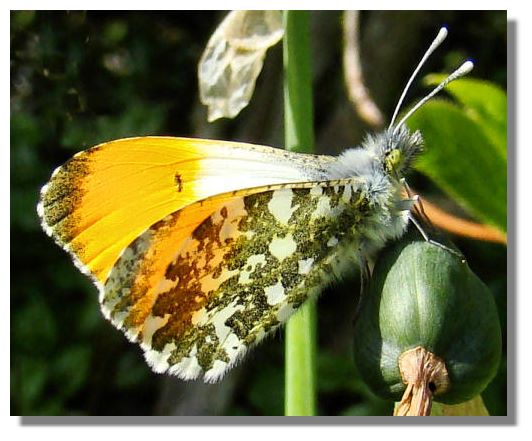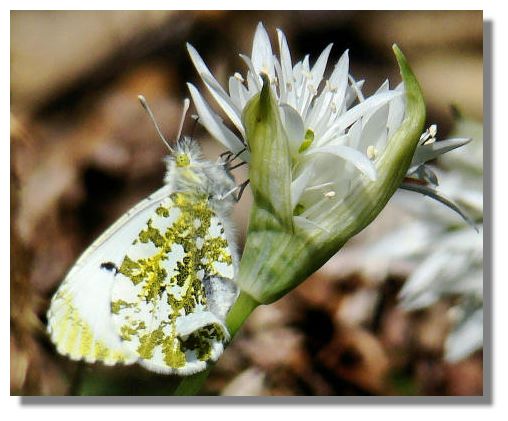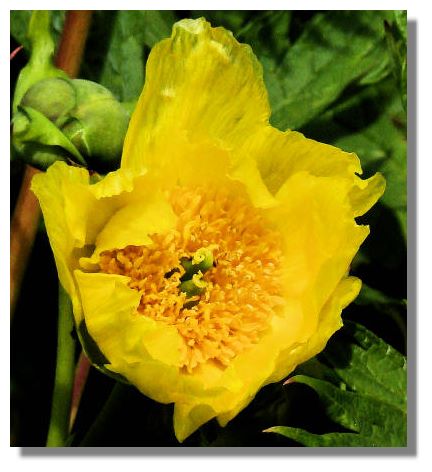The Rampant Scotland Newsletter includes a number of photographs which illustrate the weather and the seasons, plus the flora and fauna of the current week around Scotland. This separate "colour supplement" displays some more pictures, in a larger format. Here is this week's crop of Scottish views!
After such poor weather in April, with lower temperatures than we have become used to in recent years, it was a delight to have a week of warm sunshine. The butterflies that have been hiding out of the April showers really started to appear this week and this was just one of a number of Orange Tips to be seen. This is the male of the species, with the distinctive markings on its upper wings that give this butterfly its name.
The female Orange Tip is plain white on the top of the wings and can easily be mistaken for a common small white - until the mottled underwing markings are sighted. This one is feeding on a Ramsons Wild Garlic flower.
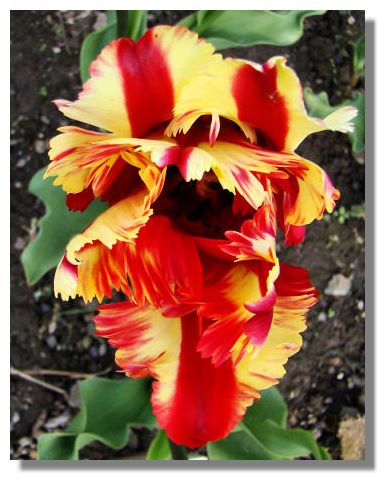
Plant breeders have developed many varieties that are far removed from the traditional shape and colours of the tulip. This exotic looking one is "Flaming Parrot" and was one a large number of different tulips being grown in the walled garden of Culzean Castle Country Park.
The common wild daisy has given rise to a number of more cultivated perennials for the garden where they are known by their Latin name of Bellis. They are often grown as biennials because flower size and quality declines each year and they are best replaced with fresh plants grown from seed.
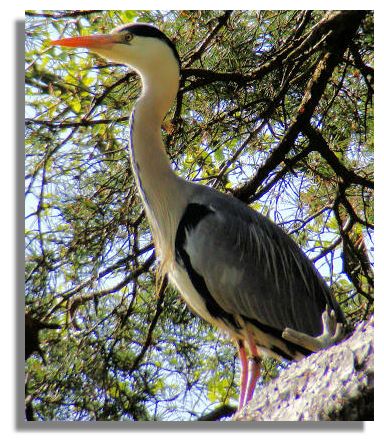
Although the Heron is a shy bird that flies away as soon as humans appear, I have managed to take quite a few photographs of them thanks to a good telephoto lens. But this is the first time I've seen one perched high in a tree - they are usually at the edge of water, feeding. But Herons will often nest near the top of deciduous or conifer trees, though some will build their nest on the ground, in reedbeds or on a cliff edge.
Choisya is largely grown for its brilliant greeny yellow leaves which it displays throughout the year. They shine out like a beacon on a dull winter's day. It also has these attractive clusters of sweetly scented flowers - while the leaves are also highly aromatic when crushed. The shrub is a native to Mexico and South-West USA.
Paeonies are very often various shades of red or white, but there are also yellow varieties such as this one. The name "Paeony" (often spelt as "Peony") derives from the Greek word "Paeon" meaning "a physician to the Gods". Once planted the Paeony likes to be left alone and "punishes" those who try to move it by not flowering again for several years. Once it has become established, however, it produces splendid blooms each year for many, many years.If you want to look back at earlier editions of this Colour Supplement, there is an Index Page
